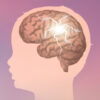As part of a recently published study in Pediatrics, researchers at Penn State University studied the developmental complications associated with insomnia, beginning in childhood and transitioning into adulthood.
502 young participants were involved in the study. The participants were studied at around the age of 9 upon recruitment, then several years later in late-adolescency, followed by another follow-up in the mid 20s.
Insomnia symptoms were assessed as moderate or severe and involved difficulties in initiating and/or maintaining sleep.
One of the most frequent trajectories among the young participants was persistence followed by remission, in which symptoms of insomnia that developed during childhood transitioned into adulthood.
“The odds of insomnia symptoms worsening into adult insomnia (22.0% of children, 20.8% of adolescents) were 2.6-fold and 5.5-fold among short-sleeping children and adolescents, respectively,” according to the findings.
“Early sleep interventions are a health priority because pediatricians should not expect insomnia symptoms to developmentally remit in a high proportion of children,” the findings also determined.
“Objective sleep measures may be clinically useful in adolescence, a critical period for the adverse prognosis of the insomnia with short-sleep duration phenotype.”


